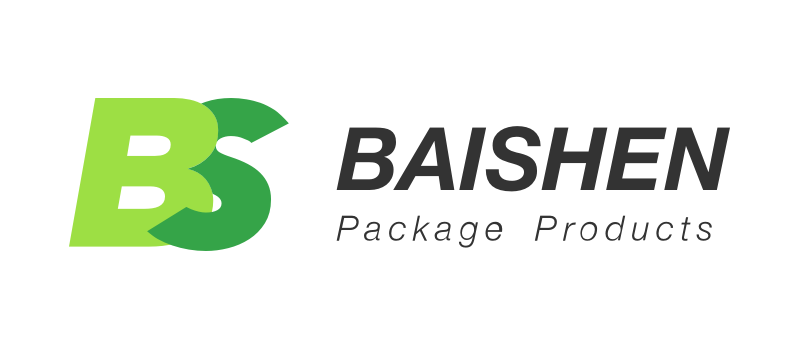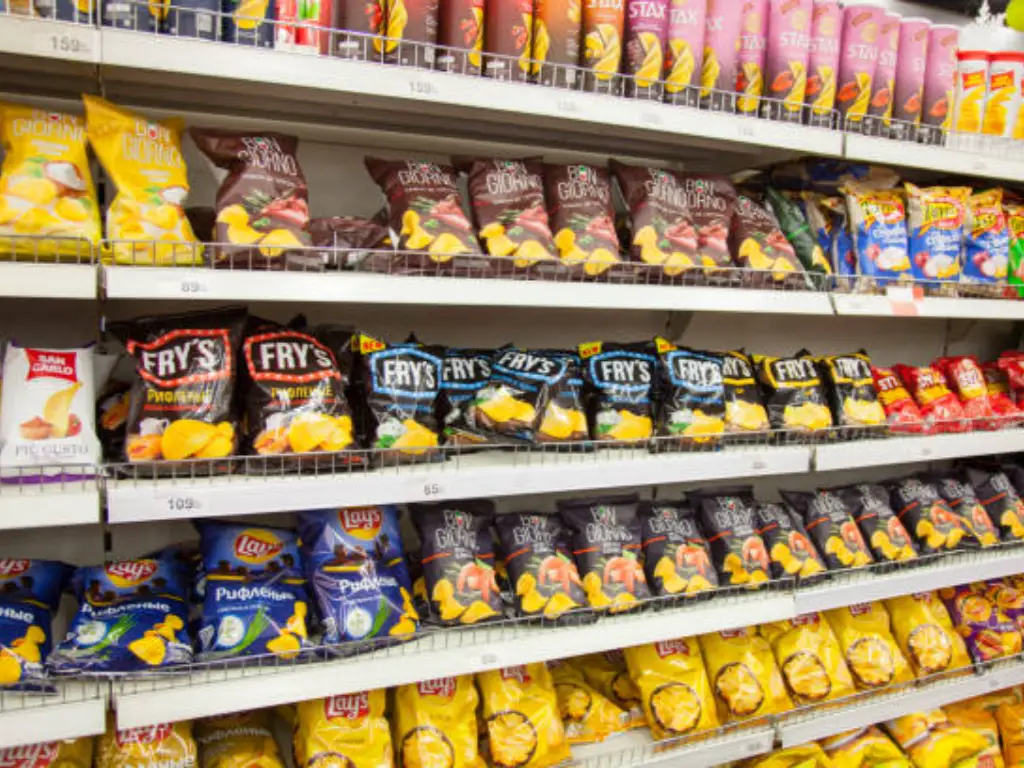The snack packaging market has emerged as a strong growth driver for brands worldwide in the current competitive food industry. Precedence Research estimates the market to be USD 24.19 billion in 2025 and USD 35.95 billion in 2034 at a compound annual growth rate (CAGR) of approximately 4.5 percent with respect to the global snack food packaging. Simultaneously, according to Grand View Research, the market of snacks, in particular, reached more than USD 690 billion in 2023, which is predicted to rise to more than USD 920 billion by 2030.
With the increasing demands of convenience, freshness, and sustainability on the part of the consumer, packaging has been able to transform way beyond its traditional protective purpose. It has now been at the crossroads of functionality and emotion – maintaining quality, making shelf impact, and transmitting brand identity. To both new and old brands, the science and art of snack packaging is not only an operational requirement, it is a strategic requirement that constitutes competitiveness in a saturated market.
This guide will provide you with a guiding principle to understand the ins and outs of snack packaging – from functional formats and material choices to sustainability strategies, design principles, and manufacturer partnerships- and help you make informed and progressive choices to propel your brand.
Why Snack Packaging Matters for Your Brand
Before examining various materials and formats, it is vital to look into the numerous aspects and functions of a package. Packaging acts as a protector of a product, the primary marketer of a product, and a bridge to the customer.
Preservation: The Foundation of Quality
Protection is the most important role played by packaging. A properly designed package forms a controlled environment that protects the contents of the package against environmental influences of moisture, oxygen, light, and physical impact. This barrier packaging is important in prolonging shelf life, preserving freshness, and delivering fresh produce to the consumer in its desired taste, feel, and nutrient content. In its absence, there is a drop in the quality of products, which results in waste and a lack of confidence in buyers.
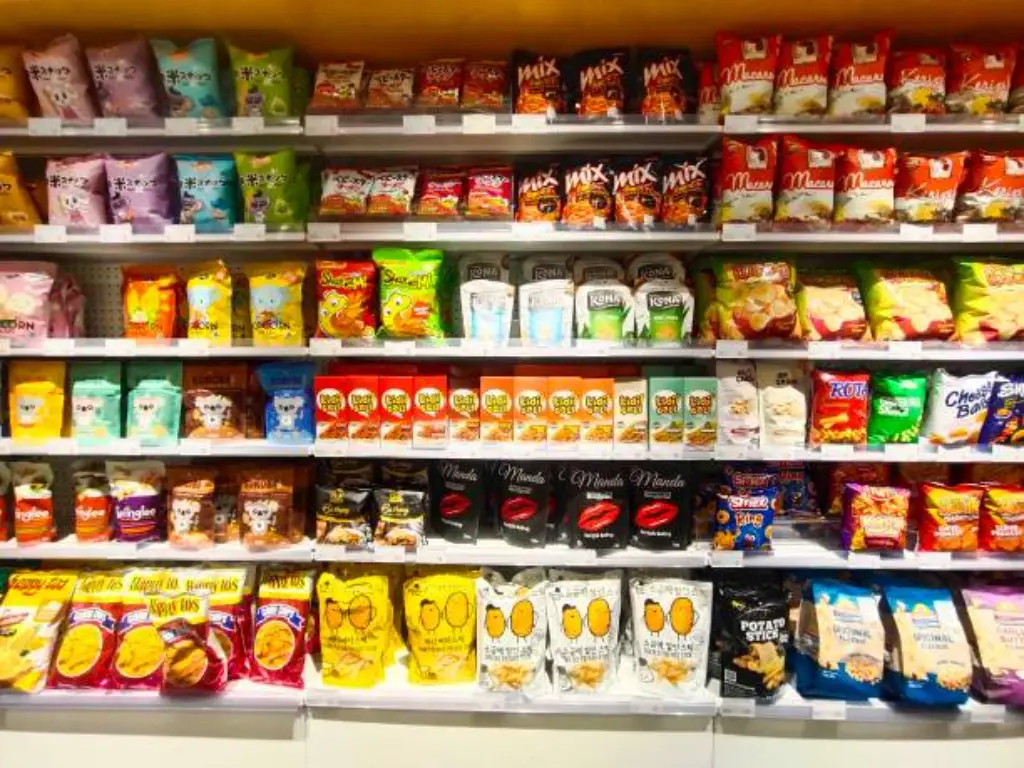
Persuasion: The Silent Salesperson on the Shelf
Besides the protective functions, the packaging is an unobtrusive and powerful marketing tool. A package on a retail shelf has only a few seconds to attract the attention of a consumer in a crowded retail shelf. This is the initial impression of the brand. It can be outstanding design, colors, and a high level of quality that makes one product stand out against others and lead to trial and purchase of the product. It also passes on important information at a glance, including facts about nutritional value and ingredients, as well as the story of the brand and its values.
Personification: Enhancing the Consumer Experience
Convenience and Modern consumer convenience are predicated on packaging. A resealable compartment in a zippered bag of trail mix and easy-to-open tear notches on a protein bar to conform to the contemporary lifestyle. All components of the packaging, from the choice of materials to the overall construction, communicate the ethos of the brand. The materials are of high quality, making this your first opportunity to showcase the brand’s commitment to spiritually and morally high-quality healthy products. Quality of packaging adds to the quality of the product by preserving, persuading, and embodying the brand.
Main Types of Snack Packaging and Their Uses
Choosing the right packaging format for a product entails many different considerations and can significantly affect shelf life, product quality, transportation, consumer perception, and overall cost. Within the domain of snack packaging, there tend to be three broad types: flexible, rigid, and paper. Each packaging provides different benefits and is appropriate depending on the product, brand value, and target distribution. Knowing the fine points of these three types is the first step toward positioning your brand effectively.
Flexible Packaging
Flexible packaging dominates the snack industry for a good reason: it is cost-efficient, versatile, and provides many consumer-friendly features. Also, flexible packaging provides sustainable packaging options compared to rigid packaging, which means it is better for the environment, ensures excellent print quality, and is more economical when it comes to transportation costs. This ultimately lowers the overall carbon footprint for the company.
● Stand-Up Pouches
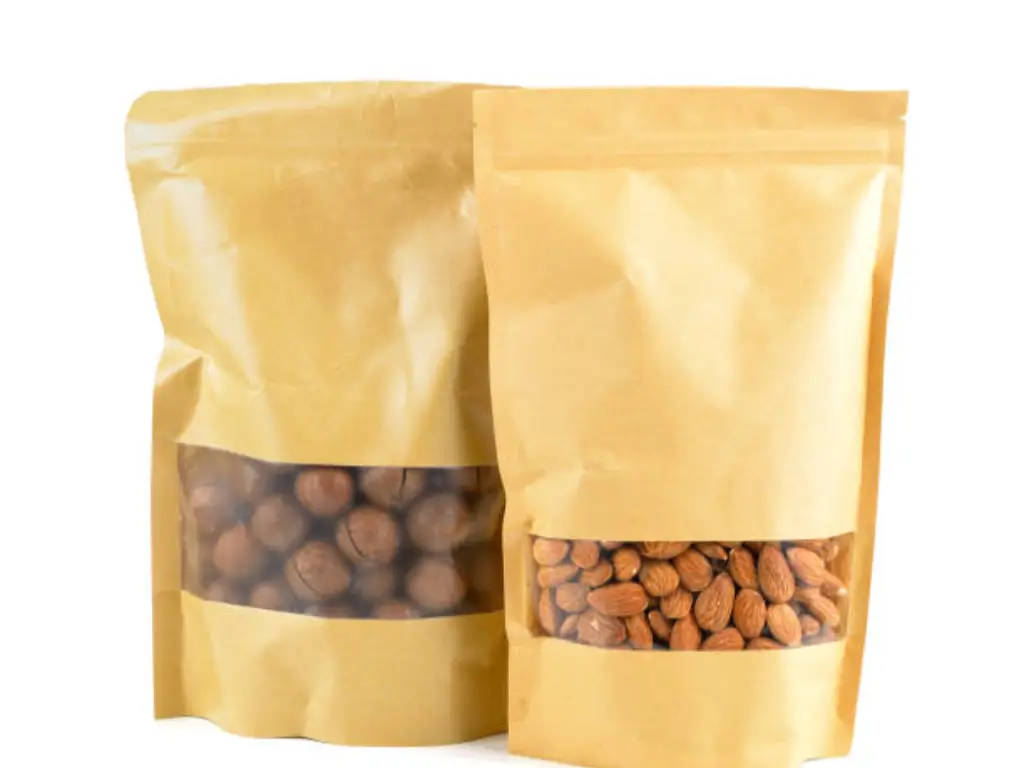
This is a very popular type of pouch, and it is characterized by the bottom gusset that allows the stand-up pouch to stand up straight on the shelves of retailers and be seen well by the brand. It can be applied to a large variety of dry snacks such as granola, jerky, and confections, due to its versatility. Every inch of your pouch can be designed with features such as press-to-close zippers and hang holes, which provide a polished and consistent look, making them more convenient to consumers and popular in the market.
● Pillow Pouches:
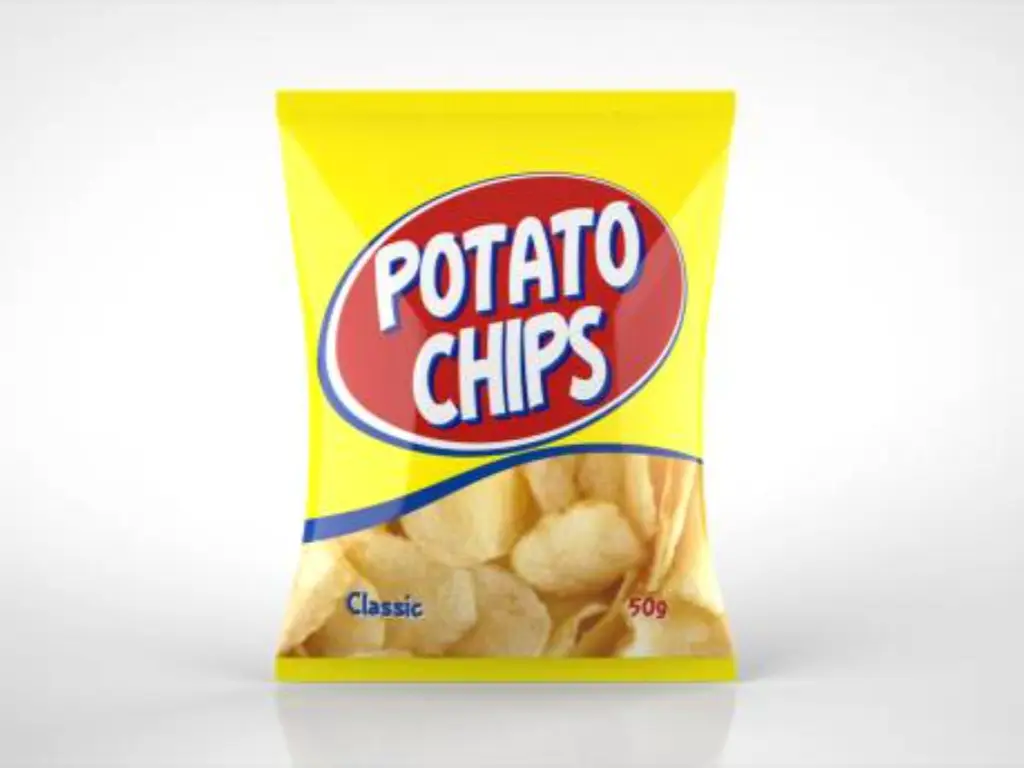
Pillow pouches are one of the most affordable formats because of their simplicity—they only require top, bottom, and vertical back seals. They are the industry standard for lightweight, high-volume products, such as potato chips and popcorn. Though they aren’t self-standing, their efficiency at high-speed production and low material use saves hours of labor, making them ideal for mass-market food consumption at a reasonable cost.
● Flat-Bottom Bags (Box Pouches):
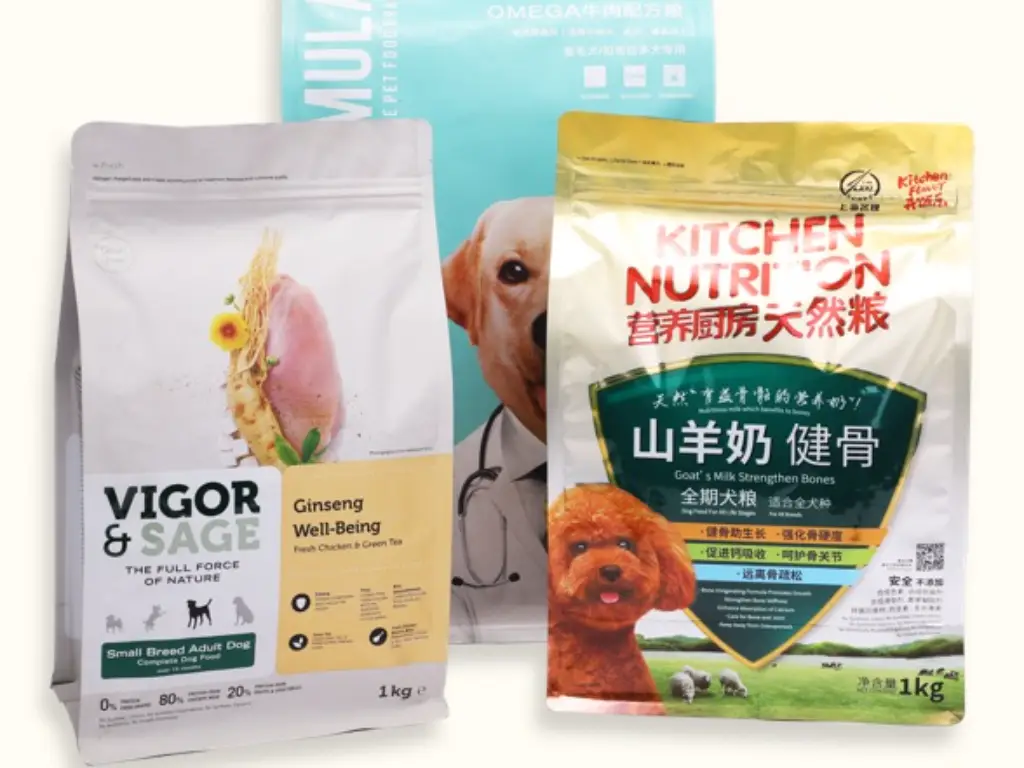
The flat-bottom bag is a more premium evolution of the stand-up pouch and has a distinct rectangular base, which offers great stability and five different panels for branding. This construction creates a box-like appearance that signals a high-quality product more positively, which is why this bag is favored for upscale snack foods and premium coffee, where shelf presence is very important.
Rigid Packaging
Rigid formats are better physically secured and have a high-end touch. Although normally more expensive and heavier than flex, they are superior in some uses where framework and perceived worth are important.
● Composite Cans (Canisters)
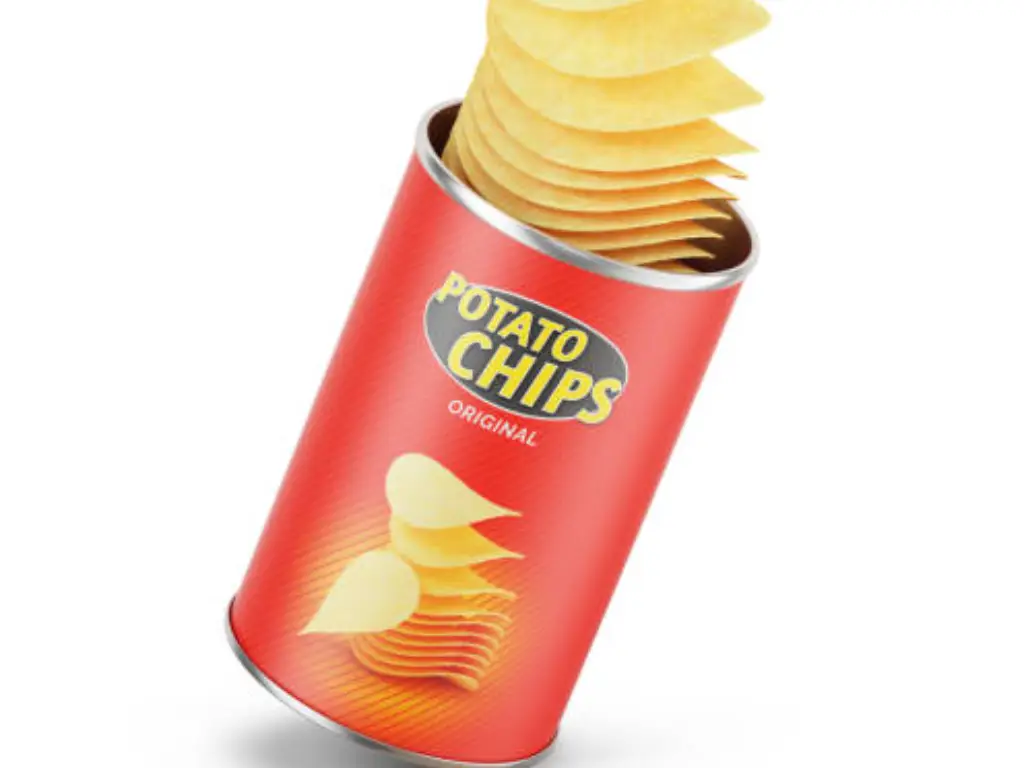
These canisters consist of spiral-wound paperboard bodies with metal or plastic ends and stacked potato crisps. Paperboard bodies are good against physical-attack crushing. They have a rigid cylindrical shape, which allows for a large uninterrupted surface for graphics and good shelf stackability. However, the difficulty in recycling multilayered construction is a counterargument.
● Jars & Tubs (Plastic or Glass)
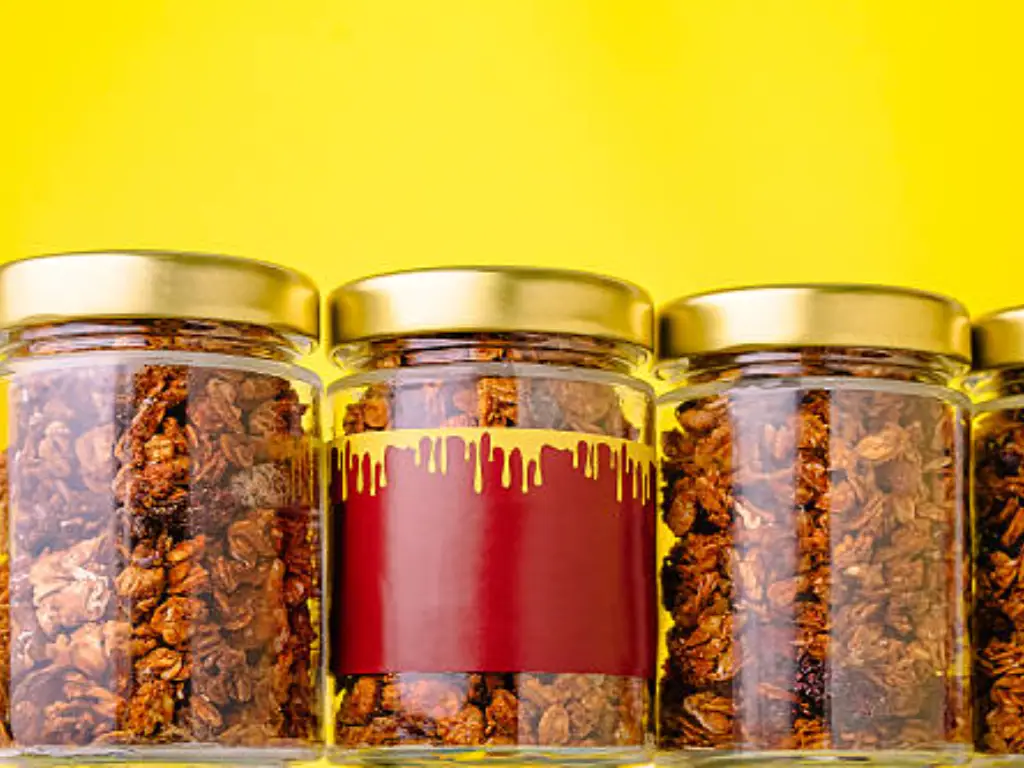
These are used for premium snacks, dips, spreads, and tubs. Jars and tubs are used for conveying premium, quality, and freshness. Recyclable glass. It is a tradeoff with high shipping weight, high unit cost, and glass breakage, and with the transparency of most plastic containers.
Paper-Based Packaging
These formats are made of paper and paperboard. They are seen as traditional or natural products and are preferred more based on perceived sustainability, offering an alternative to plastic packaging.
● Folding Cartons (Boxes):
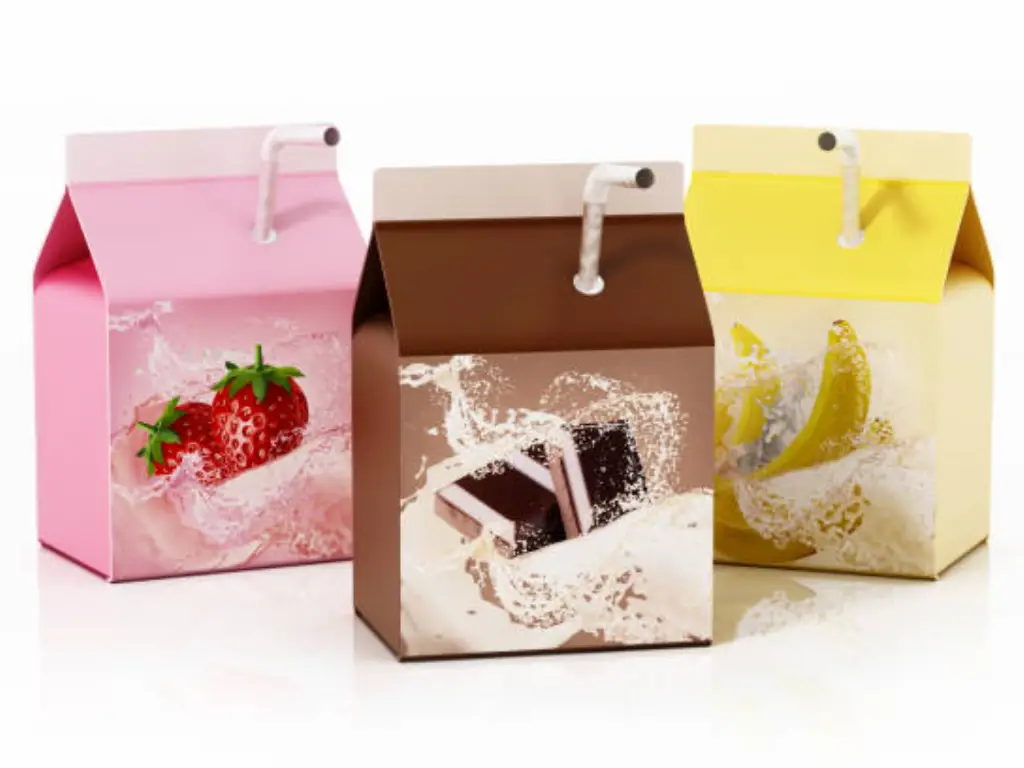
Folding cartons allow for an impressive and strategic design for brand messaging for crackers, cookies, and cereal bars. These cartons are also stackable and provide some structural protection. However, paperboard’s protection against moisture and oxygen transmittance is minimal. Therefore, an inner bag or wrapper is needed to protect the product and prolong its shelf life.
● Paper Bags:
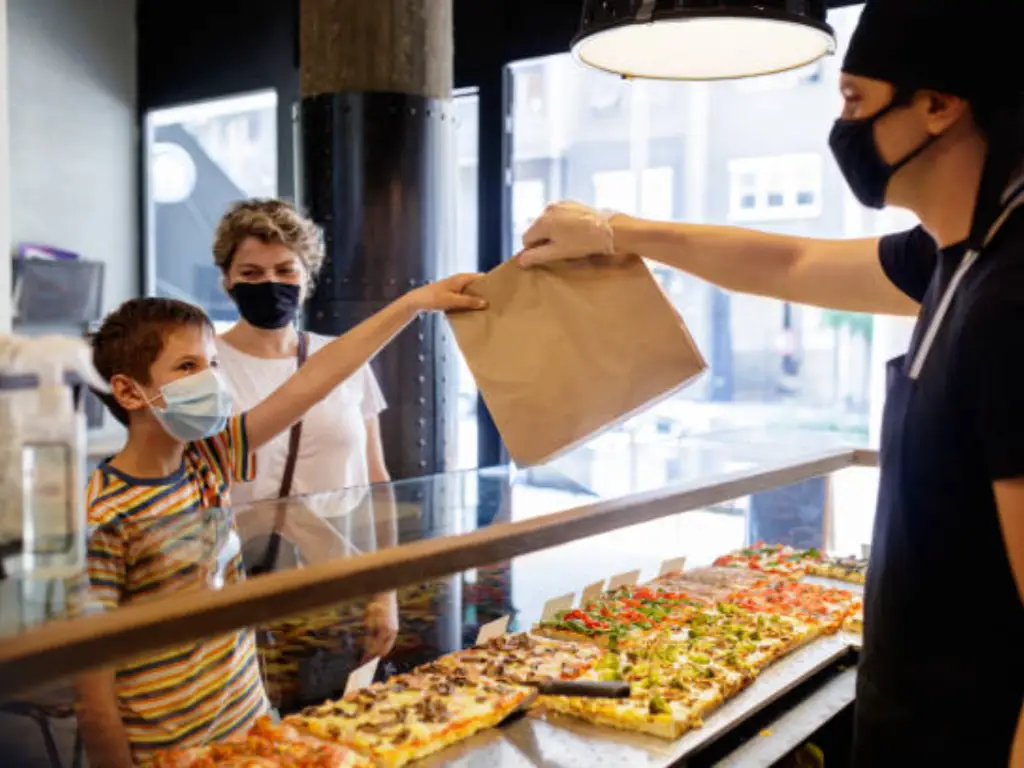
Single-layer paper bags are simple, low-cost options and provide an eco-friendly image for items with short shelf lives, like freshly baked goods or gourmet popcorn. The main drawback with these bags is their limited barrier properties. Therefore, they are not useful for items that need to be protected over an extended period from environmental elements.
Every format has its place; the main choice comes down to protection of the product and the balance of branding goals, production expenses, and the user’s overall experience. For various flexible snack packs, the balance of performance and overall sustainability of the material is appealing.
But, like for every material, it also comes with barriers in variations of strength, cost, and sustainability.
To help you make a more informed decision, the following comparison provides a quick overview of how different snack packaging materials perform across these key dimensions.
| Packaging Material | Barrier Performance | Cost Level | Sustainability | Best for Snack Types |
| Plastic (PE / PET / BOPP) | Excellent protection against moisture and oxygen | Low to Medium | Moderate – recyclable mono-materials are emerging | Chips, popcorn, nuts, trail mix |
| Aluminum Foil Laminates | Complete barrier to light, moisture, and oxygen | Medium to High | Low – difficult to recycle due to multi-layer structure | Jerky, high-fat, or long-shelf-life snacks |
| Kraft Paper (with PE or PLA inner lining) | Moderate barrier, good structure | Low | High – recyclable or compostable options available | Cookies, granola, crackers |
| Compostable Films (PLA, PBAT, cellulose) | Limited barrier compared to plastics | Medium to High | Excellent – industrially compostable | Organic snacks, sustainable brands |
| Glass or PET Jars | Superior sealing and product visibility | High | Excellent – fully recyclable and reusable | Premium nuts, spreads, gourmet snacks |
| Composite Cans (Paper + Metal) | Strong mechanical and barrier protection | Medium to High | Medium – partially recyclable | Stacked chips, powdered products |
| Paperboard Boxes (with inner bag) | Provides physical protection; relies on the inner bag for barrier | Medium | Good – recyclable outer carton | Crackers, biscuits, cereal bars |
Sustainable Packaging: A Modern Necessity
Packaging sustainability is not an option anymore; it is an absolute market necessity. Customers appreciate and rank the value of the products they buy, delivering a market signal that they are more likely to buy from a brand that packages their products more sustainably. Businesses that are willing to integrate sustainable packaging alternatives into their options will likely gain more loyalty from their buyers and attract new buyers who are environmentally conscious and sustainably responsible.
Sustainability is about waste reduction, resource conservation, and a decreased carbon footprint throughout production and transport, ultimately reducing overall waste. The packaging industry, and particularly the food packaging material industry, has experienced innovation in waste reduction through:
- ● Recyclable Packaging:
Mono-material structures are still the most widely used primitive recyclable packaging systems. Pouches made of recyclable Polyethylene (PE) are recyclable through store drop-off systems and offer moisture resistance. The most prominent challenge of developing recyclable packaging systems is maintaining the protective food barrier. Recent advances in material science are developing high-barrier, recycle-ready, and sustainable films that protect food from spoilage to overcome this barrier.
- ● Post-Consumer Recycled (PCR) Content:
This plan includes the use of recycled materials, which include plastics previously used in milk jugs or water bottles, in new packaging films. Direct conversion of the PCR content decreases the necessity of the production of virgin plastics and diverts resources from landfills, helping to lower greenhouse gas emissions. Brands may also identify the percentage of PCR material in their packaging, which will be frequently put on the package itself, to communicate their promise of a circular economy and the minimization of plastic waste.
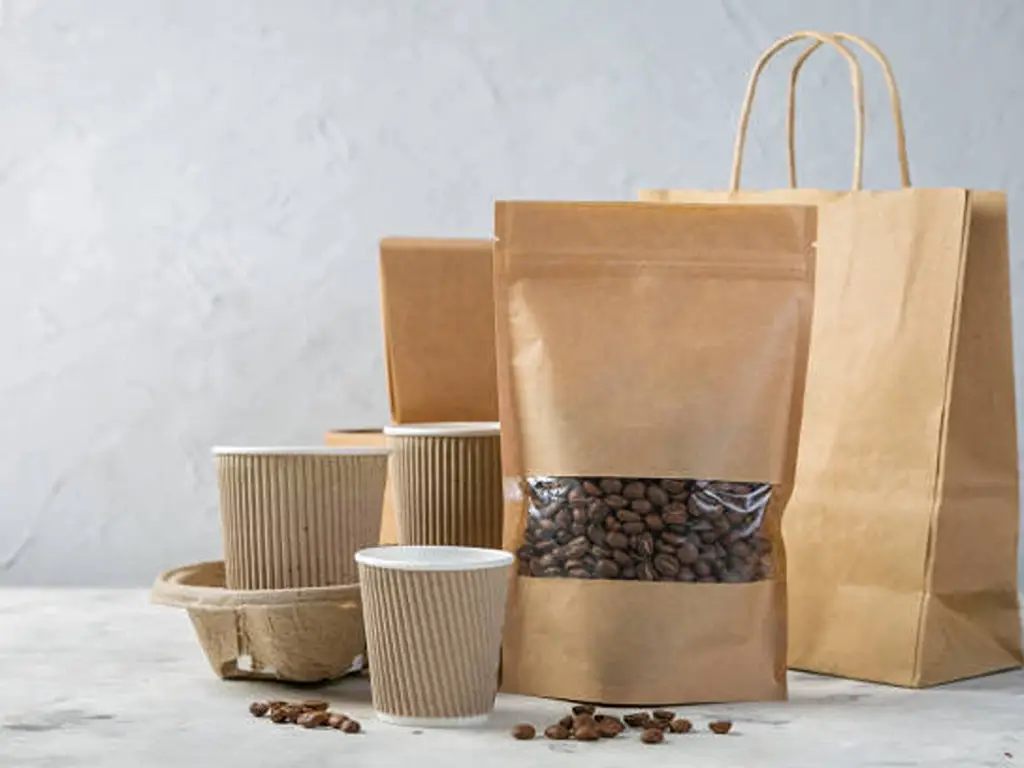
- ● Compostable Packaging:
This is a type of material that can be utilized in industrial composting plants, decomposing into natural components under certain circumstances. Compostable packets would be a great idea to adopt a brand that aims to appeal to consumers who are environmentally cognizant and consider their environmental impact, such as new brands and their packaging in organic or natural products. However, it is important to give clear instructions on the packets so that the consumer can know how to dispose of them.
Snack Packaging Design Tips That Drive Consumer Appeal
You can start developing the visual design of the packaging after the structure and materials have been established. This is the design component that captures consumer attention in a retail environment. A packaging design must be eye-catching, informative, and aligned with branding.
1. Clarity and Simplicity: Simplicity is key, especially when competing with a design that is more visually busy. The package must clearly state what the product is and how the brand differentiates itself. Avoid overcomplicating the design. Consumers prefer streamlined and clear package designs. The product name, the flavor variations, and key highlights must be easily decipherable.
2. Strategic Use of Color: The choice of colors can enhance or detract from the messaging in the packaging. Packaging design that is aimed at invigorating the consumer and encourages excitement should forgo the softer colors and use bold colors and brighter colors. Identifying a brand color palette and consistently using it with varying products helps establish a recognizable product family.
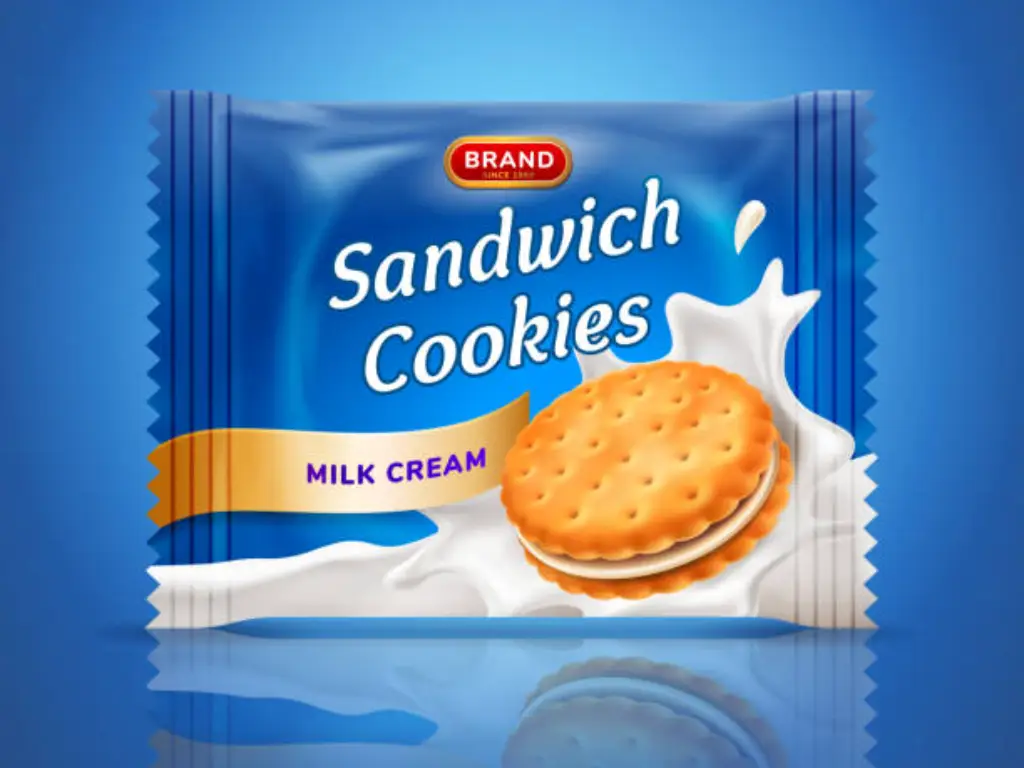
3. Typography That Speaks: The fonts that are being used on your packaging will play an essential role in the personality of the brand. A clean and modernized sans-serif can reek of efficiency and health, whereas a traditional serif or a custom script can strike a feeling of tradition or craftsmanship. The most important thing is legibility; all the text should be readable.
4. Leverage Finishes and Textures: The feeling of a package can increase its value. Specialized finishes such as matte, soft touch, or gloss could be placed strategically to emphasize particular parts of the design. Matte finish may look sophisticated and modern, whereas a spot gloss may help to attract attention to the brand logo or a particular picture. These various finishes can be used together to make a vibrant sensory experience.
5. Functional Features as Design Elements: Don’t overlook the design potential of functional elements. A transparent window can showcase the quality of the crunchy granola or colorful candy inside, building trust and appetite appeal. Zippers, tear notches, hang holes, and premium finishes should be integrated seamlessly into the overall design, not treated as afterthoughts. These details demonstrate a thoughtful approach to user experience.
Things to Consider When Choosing a Snack Food Packaging Partner
It is not an easy task to convert a design idea into a tangible, commercially viable package, and it needs collaboration with an expert and dependable flexible packaging company. The partner has to become more than just a supplier; he or she must also act as a consultant who can help you in material choice and printing procedures, and logistics. The following are some critical considerations when choosing potential partners:
● Food-Grade Safety Certifications:
This cannot be compromised. A manufacturer is required to be globally certified, including the Brand Reputation Compliance Global Standards (BRCGS). This certification would guarantee that hygiene, quality, and food safety are implemented to the highest standards in the entire production process of the facility.
● Expertise in Specific Materials and Formats:
Find a partner who has proven knowledge with regard to the snack industry. Not only should they have a profound knowledge of the performance of the various barrier films with various food items, but they should be able to prescribe the best structure of the materials to ensure the maximum shelf life of the food product. Their experience is capable of eliminating expensive mistakes and delivering your packaging as intended.
● Advanced Printing Capabilities:
The finished printing is one of the factors directly influencing the perception of your brand. The industry has been transformed by modern digital printing, which has really helped a great deal. It enables one to create colorful, photo graphic images and clear text without printing plates. This technology eliminates plate charges and allows it to be economically feasible to produce more than one plate with different SKUs, seasonal launches, or promotional packages.
● Low Minimum Order Quantity (MOQ) and Quick Turnaround Times:
When a company or brand is trying new product selections, it is essential to have the opportunity to place orders in quantities. The availability of low minimums offered by partners, usually facilitated by digital printing, will enable you to control cash flow in the most effective way and minimize the risk of outdated stock. This freedom allows the market to be more dynamic. Moreover, ask them about the normal production schedule. Quick turnaround times, which are usually in business days and not weekdays, ensure that your product reaches to market much faster.
Custom Flexible Packaging : Built for Your Brand’s Success
✅ 10+ Years of Expertise: Since 2012, trusted by food, beverage & pet food brands worldwide.
✅ Certified Safety: BRC, ISO & SGS materials ensure food-grade quality and protection.
✅ Premium Printing: HP Indigo digital, flexo & gravure for vivid colors and precise detail.
✅ Fast & Flexible: Low MOQ, full customization, 7–10 day turnaround.
✅ Eco Options: Recyclable, compostable & bio-based films available.
Future Trends in Snack Packaging
Continuous innovations in technology, changes in consumer behaviors, and new regulations fuel changes in packaging. For companies to keep a competitive advantage and to meet evolving consumer demands, they have to keep an eye on what’s new and what’s changing.
- ● Smart and Active Packaging
Active packaging is a new technology in which packaging materials can communicate and interact with the contents. The consumer experience and the overall supply chain can be affected by changes in the packaging used. The use of QR codes that link a consumer to in-depth information about a product and a brand is an early step in this evolution. There could be packaging with NFC chips and printed sensors that can measure and monitor the freshness of a product and even warn the consumer when the product is spoiled.
- ● Hyper-Personalization
The use of digital printing technology can provide brands with the ability to create packaging that is more personalized and more customized. This can be as simple as printing a shopper’s name on a box or as elaborate as creating custom designs for a product to celebrate a holiday or target a specific age group. This customization connects the consumer to the product and provides marque value to the packaging, giving the consumer a memorable experience.
- ● Convenience and Portability
The desire for food that can be consumed quickly is increasing. This will promote even more creativity in single-serve, portioned, easy-to-open, easy-to-carry, and easy-to-dispose packages. Look for more innovative forms and dispensing systems designed for people with busy and active lifestyles, who want to save hours in food preparation.
- ● Data-Driven Design
More and more brands are using sales and consumer feedback to quickly revise and refine packaging. Using promotional packaging for short runs and A/B testing various designs in certain regions is expected. This will enable a more focused and strategic approach to packaging that will resonate with targeted consumer groups.
Start Your Custom Packaging Journey
When it comes to snack packaging, important steps in the process include choosing a sufficiently flexible packaging style and appropriate materials, developing a design, and finding a manufacturer who will bring your packaging design to life. As discussed, packaging is a key element in ensuring product freshness, capturing your audience, protecting your snack product, and establishing your brand.
You can develop packaging that is shelf-significant, customer loyal, functional, and sustainable. The one required is to find a professional who can combine your vision with the relevant technology and understand the food industry’s packaging needs.
Time to develop packaging that is functional and attractive for your snack brand? We know just the place to go if you’re looking to scale an established product line. Reach out to Baishen Pack and inquire about your project, material choices, and advanced printing possibilities to boost your brand.
